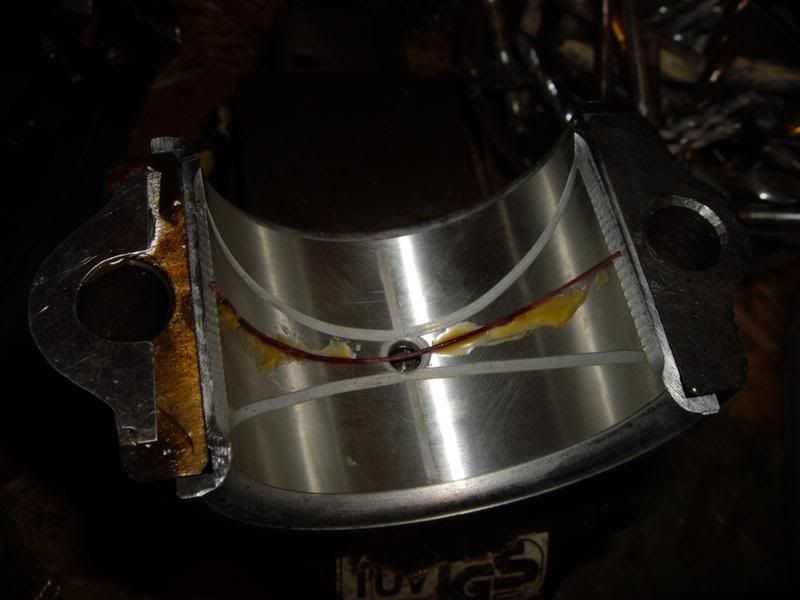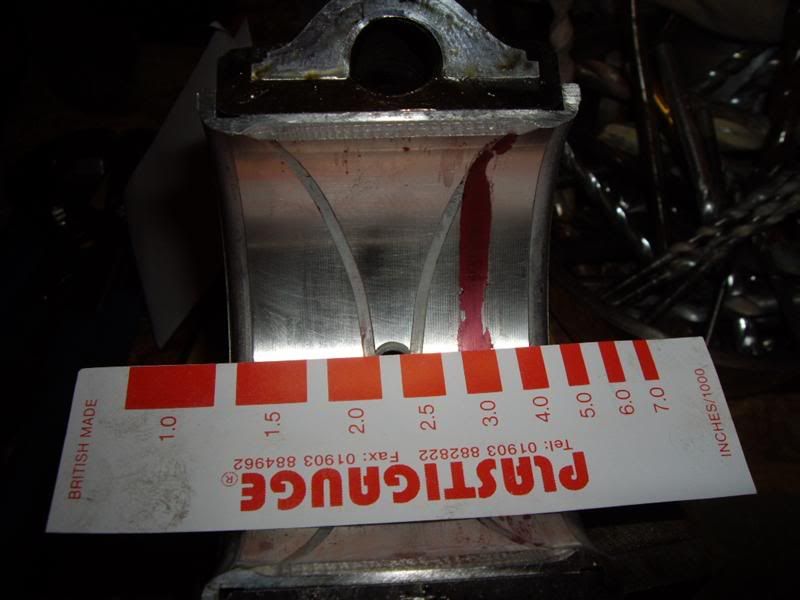Not sure if this stuff is available in the US, I guess so, perhaps under a different name.
Anyway, I used it for the first time, today, to measure, or attempt to measure the big end shells on y 6/1 'oid.
The gap is meant to be three thousandths of an inch.
Please look at this photograph:

It shows the lower shell withthe strip of gauge material in place, held there by a smidge of grease.
When I tightened to the recommeneded torque, and undid the shells, the material was badly smudged.
So much so that I felt that I could not take an accurate measurement. So I did the procedure once more, and came up with this: Yes, the Plastigauge is in a different position on the shell, but I don't think that makes any difference. Photo:

Do you read that card to say that the gap is indeed three thou? I do. The things is that the Plastigauge material got spread about somewhat - I think by the turning of the crank to get the torque wrench into position on the other side of the engine casing this might have messed it up a bit?
Thoughts on my first use of Plastigauge?
Many thanks
Tim ('Eadie') McCreadie